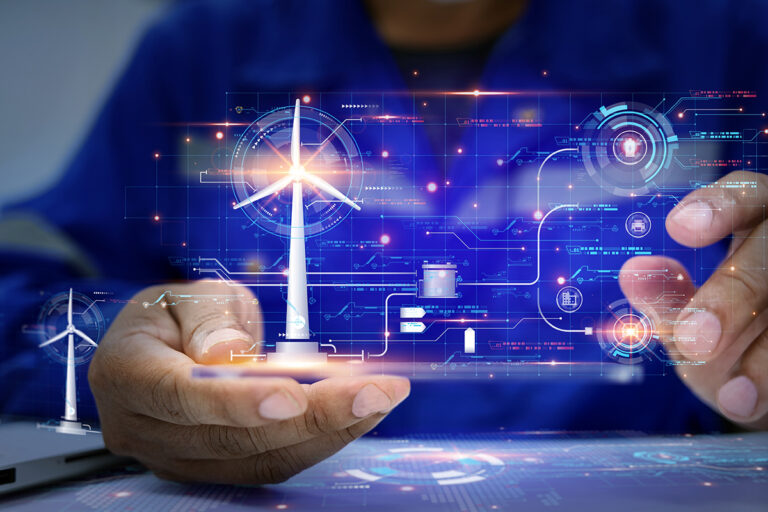The energy sector is undergoing a profound transformation. The focus is no longer limited to fuels and electrons. Intelligence is now a critical layer of infrastructure for global energy security and sustainability, and artificial intelligence (AI) is the technology that carries it into the system.
The shift is subtle but seismic. If the last century was built on steel, copper and concrete, the next will be built on silicon and software.
We already see glimpses of this transformation. AI models are now forecasting wind and solar output with impressive accuracy, easing the challenge of balancing the complex, renewables-heavy grid. Predictive algorithms can detect equipment degradation, highlighting potential future faults before they cause outages. AI-driven building systems are slashing energy use in factories and buildings by dynamically adjusting heating and cooling. Even electric vehicle chargers, a potential stress on distribution networks, are evolving into intelligent systems that align charging patterns with customer and grid needs and renewable energy availability.
And yet, the energy challenge is growing more complex. Millions of new devices, from solar panels and batteries to electric vehicles and smart meters, are connecting to aging grids not designed for two-way flows of electricity. Meanwhile, grids buckle under climate volatility, complex mixes, and rising customer demands.
Traditional optimisation methods are struggling to keep pace. What our energy systems now demand is a cognitive layer. They require intelligence built into operations that can adapt and optimise in real time.
This is not just a single technology, but a system-wide transformation that demands embedding intelligence across every layer of the energy network, locally, systemically, and structurally, so the entire grid can sense, learn, and respond.
To bring this vision to life, we need three key breakthroughs: edge autonomy, predictive intelligence, and system cohesion. Taken together, they form the architecture of a more resilient energy future.
At the outer nodes of the network, where energy is generated and consumed, is precisely where many decisions must be made. These edges are where real-time responsiveness matters most, and where embedded intelligence can deliver dramatic impact. When to charge a battery, how to balance load, or how to respond to a fault. For maximum effect, these types of decisions must be made within milliseconds. Smart chips, when deployed in substations, inverters, and meters, could enable this level of responsiveness, bringing ultra-low-power computing to the point of use and unlocking true autonomy at the edge.
This is how infrastructure begins to think for itself, with intelligence built in at the very points where energy is produced and consumed.
Beyond local control, energy systems also require real-time intelligence that spans entire networks. AI can now model thousands of variables, such as demand surges, weather events, market fluctuations, generator type and availability, and recommend optimal courses of action. This shift from reactive to predictive operations allows grid operators to stay ahead of disruptions. They’re also able to increase reliability and integrate more renewable sources without compromise.
But no system can function intelligently if its parts can’t talk to each other. Today’s energy landscape is still too fragmented. Devices and platforms often operate in isolation, unable to share data or coordinate actions. The final layer of intelligence is therefore one of cohesion: building shared frameworks, secure communication protocols, and interoperable standards that allow the entire energy ecosystem to function as one. Only then can we unlock the full potential of AI in energy.
When these layers are connected, a true intelligence infrastructure emerges, capable of sustaining the transition ahead.
Of course, AI itself consumes energy. That is precisely why efficiency-first AI design must be a guiding principle, from ultra-low-power chips at the edge, to aligning intensive tasks with renewable supply, to holding AI systems to the same sustainability standards we demand of any industry.
At the Technology Innovation Institute (TII), our role is pragmatic: to help energy stakeholders test and scale technologies that advance these goals. We focus on real-world deployment, working in open, efficient, and secure ways to support meaningful progress across the ecosystem.
But this mission is larger than any one institution. Building intelligent energy infrastructure requires collective action.
Policymakers must update standards and create regulatory sandboxes for innovation. Industry must align on data-sharing and cybersecurity. Researchers must prioritise practical breakthroughs in edge efficiency, real-time decision-making, and interoperability.
This is where sector gatherings like ADIPEC, the world’s largest energy event, are invaluable. ADIPEC 2025 will bring together energy producers, utilities, equipment makers, and digital innovators, with a goal of scaling intelligent solutions to turn ambition into alignment, and alignment into action.
When we treat intelligence not as an afterthought but as core infrastructure, we unlock extraordinary value. We witness fewer outages, lower emissions, smarter investments, and greater resilience in the face of volatility.
The UAE has consistently shown strategic foresight in energy, from early investments in renewables to building world-class R&D capacity. Now, foresight means recognising that intelligence is infrastructure.
The grid needs a brain. And now is the time to build it.









